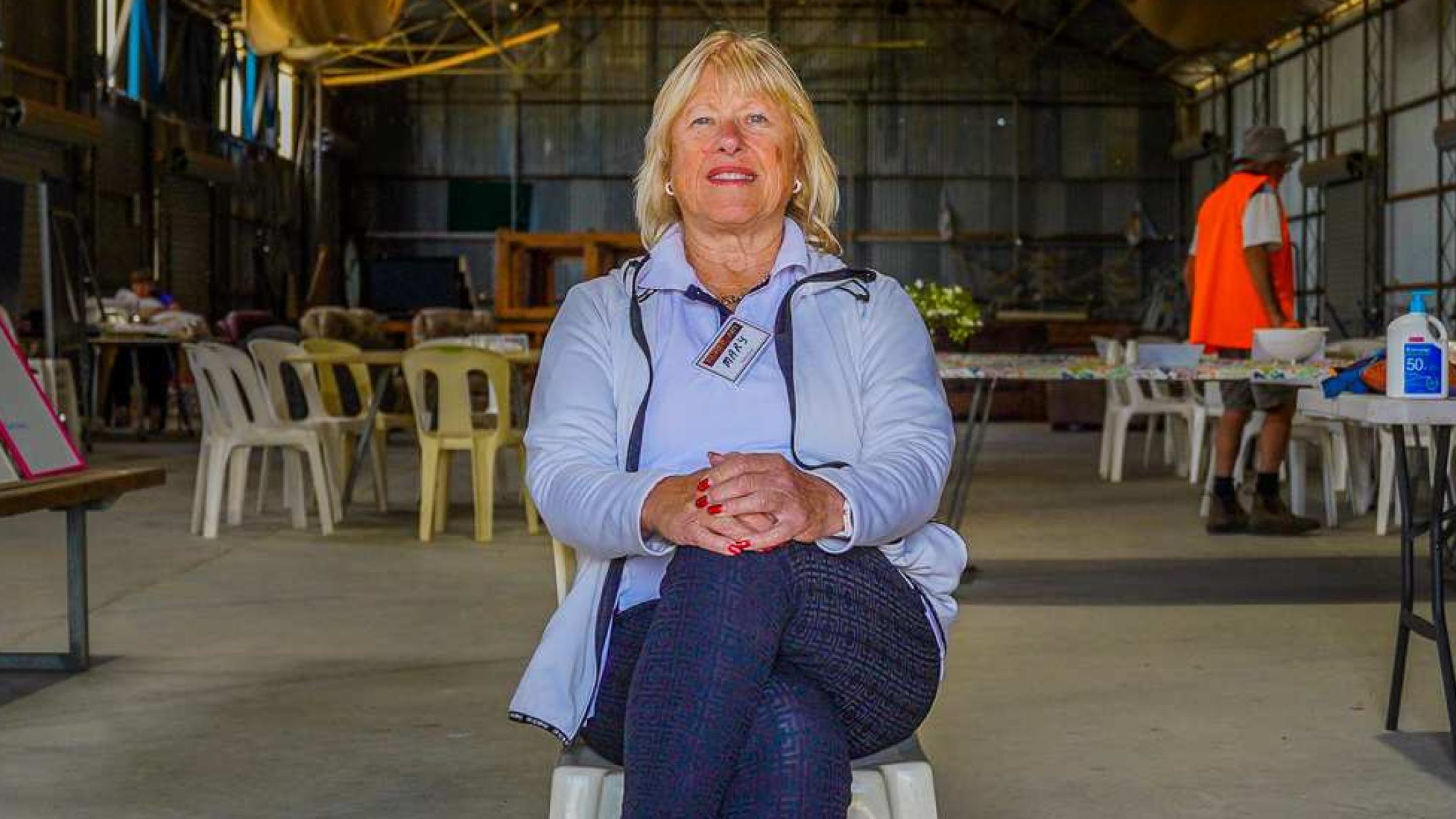Mary Howarth still thinks about a group of people stuck inside their property for 40 hours during the Bega Valley bushfire in 2019.
Warning: This story contains descriptions of natural disasters that some people may find upsetting
“One of them was badly burnt. He was going in and out of consciousness, so they had to put him in the fish pond.”
It is one of hundreds of survival stories Ms Howarth has absorbed in her nine years with BlazeAid, a national non-for-profit organisation that puts volunteers on disaster-struck properties to help people back on their feet.
In that time she has served on 17 camps — coordinating nine — that helped towns hit by fire, drought, flood and cyclone.
There are other ways the 70-year-old could spend her retirement.
“I could go and stay at some lakeside park or go down to the beach, but you can only do that for a certain amount of time — you’ve got to have a purpose in life.”
Helping farmers accept help
Growing up on a grazing farm near Coolac in the NSW Riverina, Ms Howarth knows how tough it can be for farmers to accept help.
“A lot of people are very proud; I know my Dad was and he wouldn’t have asked for help but by God it makes it easier,” she said.
“But everybody needs help. It doesn’t matter how big or small they are in what they’ve got land-wise.”
The hesitancy to accept help is deep and complex, something Ms Howarth learned at her first BlazeAid camp at fire-struck Charlton in 2011.
Enabling people to open up
When they do decide to register for BlazeAid, few farmers regret it.
“When they see something happening on the ground, actually seeing the fences being rolled up, new fences going in, it does give them a lift,” Ms Howarth said.
As well as being able to offer practical help, volunteers will often act as a listening ear.
“I do find that some of the farmers will open up more to the volunteers because they’re not as close to them,” Ms Howarth said.
Ms Howarth recalls one young woman recounting trying to save her two children after floods in 2014.
“She was staring straight ahead and the tears were rolling down her cheek while she was going through the motions of telling me what she was doing to try and get over this river and not get washed away.”
Processing other people’s grief
Three years ago at the camp for Cyclone Debbie, the weight of these stories hit home for Ms Howarth.
One boy with cerebral palsy impacted her especially.
“He was very traumatised because he was already on the kitchen table with his parents for eight hours,” Ms Howarth said.
“They didn’t know whether they were going to live or die because if the debris started building against the house, the whole thing would have washed away and they all would have perished.”
At the end of that camp, someone asked Ms Howarth: “At the end of it all, who’s there for you?”
“It was really the first time I’d ever stopped and thought about it,” she said.
“But you make it through and then you go and do another camp.”
She did take some time off after that camp. Working 12-hour days for months at a time can take its toll.
“The camps can be very long and very tiring. You do need to have a break.”
Camaraderie keeps volunteers coming back
For Ms Howarth and the 31,504 (and counting) BlazeAid volunteers, it is all worth it.
“It’s the satisfaction when you do finish and wind up a camp, that you’ve left a mark there that has helped so many people.”
“People think you have to have qualifications or some kind of skills in fencing — you don’t.
One camp had a blind man in the paddocks tying wire onto steel posts.
“He’s made to feel that he’s still needed in life. Just because you’ve got a disability, doesn’t mean to say that you can’t do things. Everybody’s welcome in our camps,” Ms Howarth said.
Last year, young visa holders joined in the effort.
“These are kids that are coming from townships in the middle of France … and they just loved it,” Ms Howarth said.
“By God they worked. They were terrific, very respectful.
Finding younger volunteers from Australia is a much harder task, Ms Howarth said.
“We need young people to keep [organisations like us] going, so I’d love to see them get involved.”
A meaningful retirement
Ms Howarth said many “grey nomad” volunteers — many semi-retired farmers themselves — were looking for a meaningful way to spend their retirement.
“This gives a lot of older people purpose … they’re still raring to go and have a lot of life in them.
When Ms Howarth is not coordinating a camp, she can be found visiting any of her children and grandchildren who live spread out over the east coast.
She sold her property at Bowral a few years ago and now spends her time living with family and friends.
Sometimes she will visit towns she has been to with BlazeAid, like her annual trip to Muttaburra.
“You pull up in the main street and they just talk to you; it’s like you were there yesterday.
“I’ve made that many friends, I can sort of call in anywhere and catch up with people I’ve met.
To assist with the Lucindale fire recovery in South Australia, contact Mary Howarth via email.




